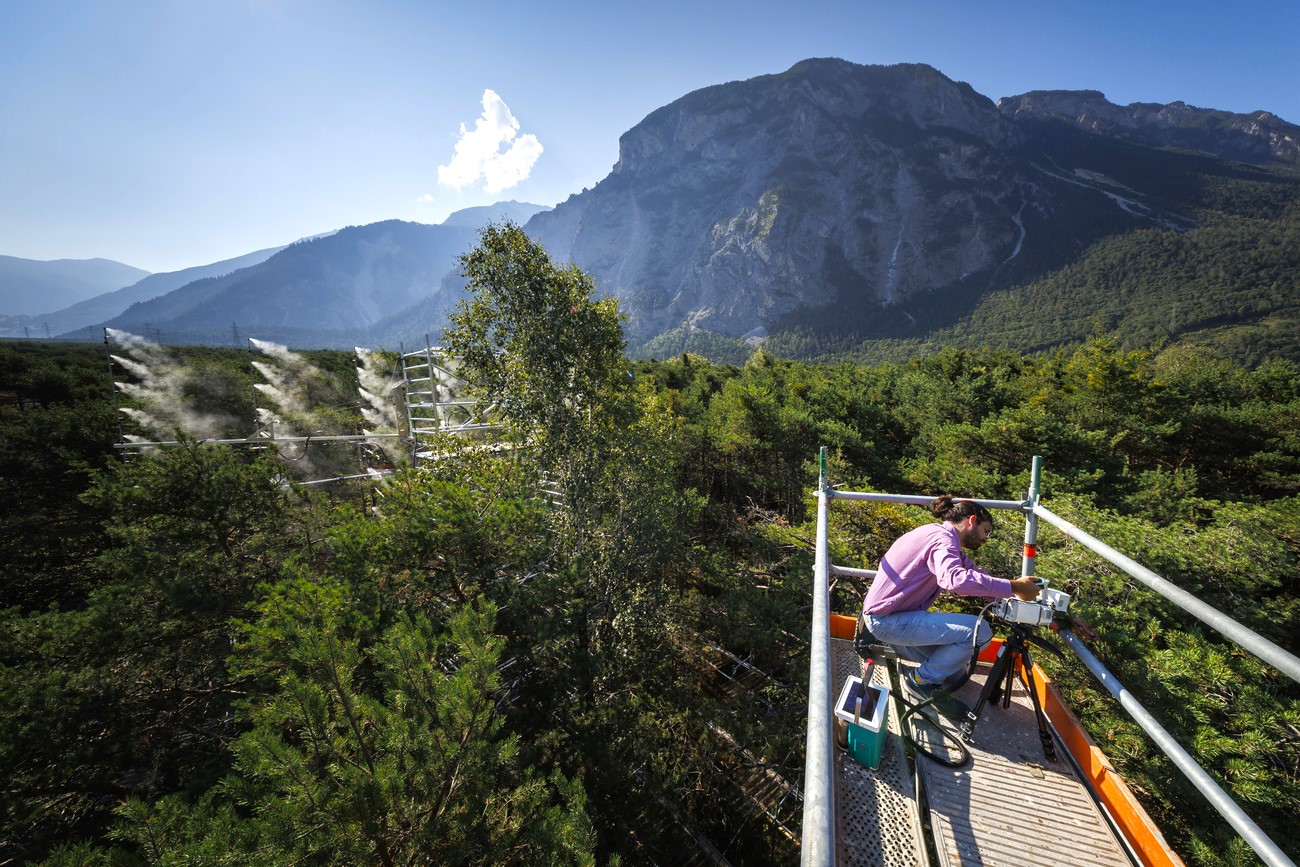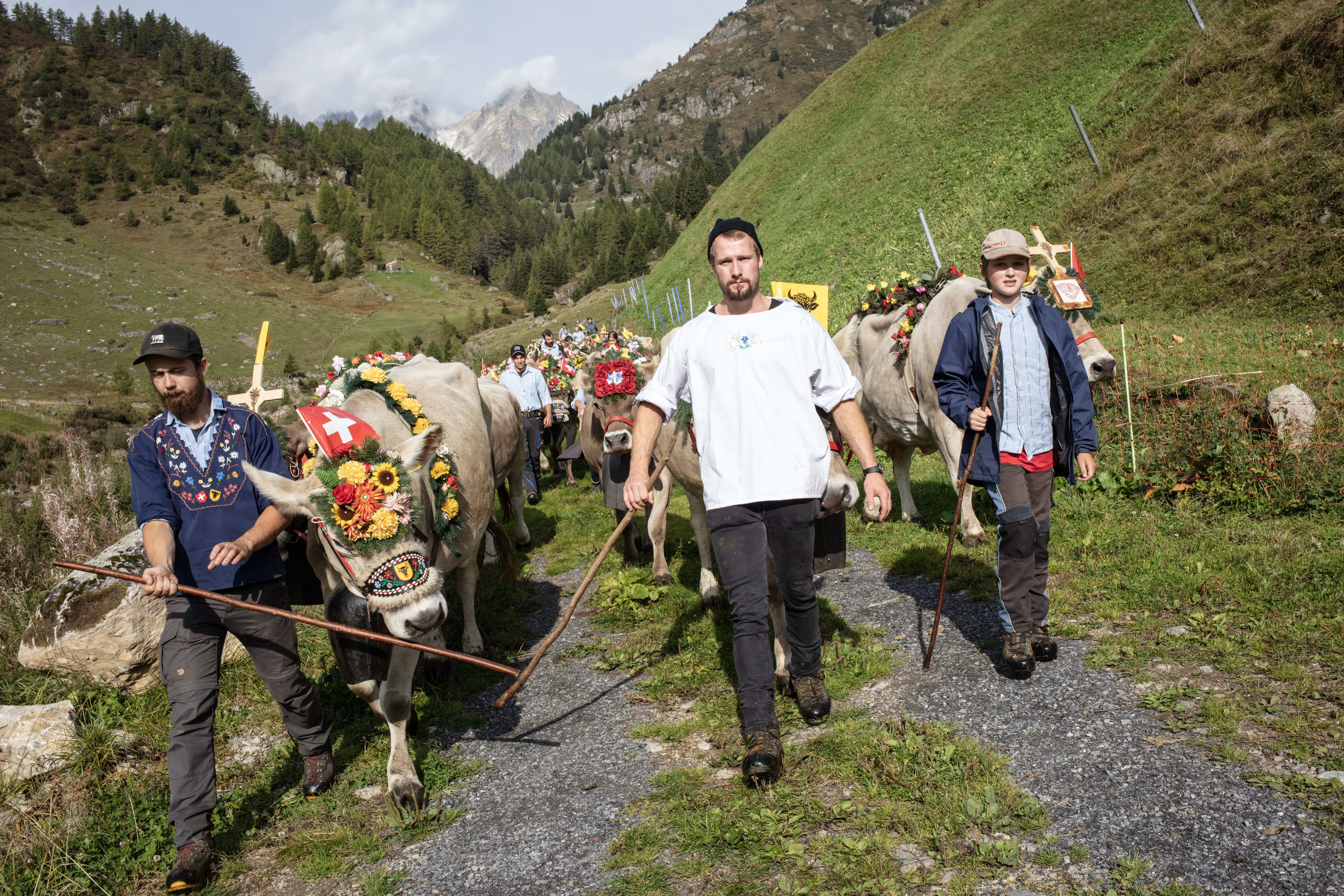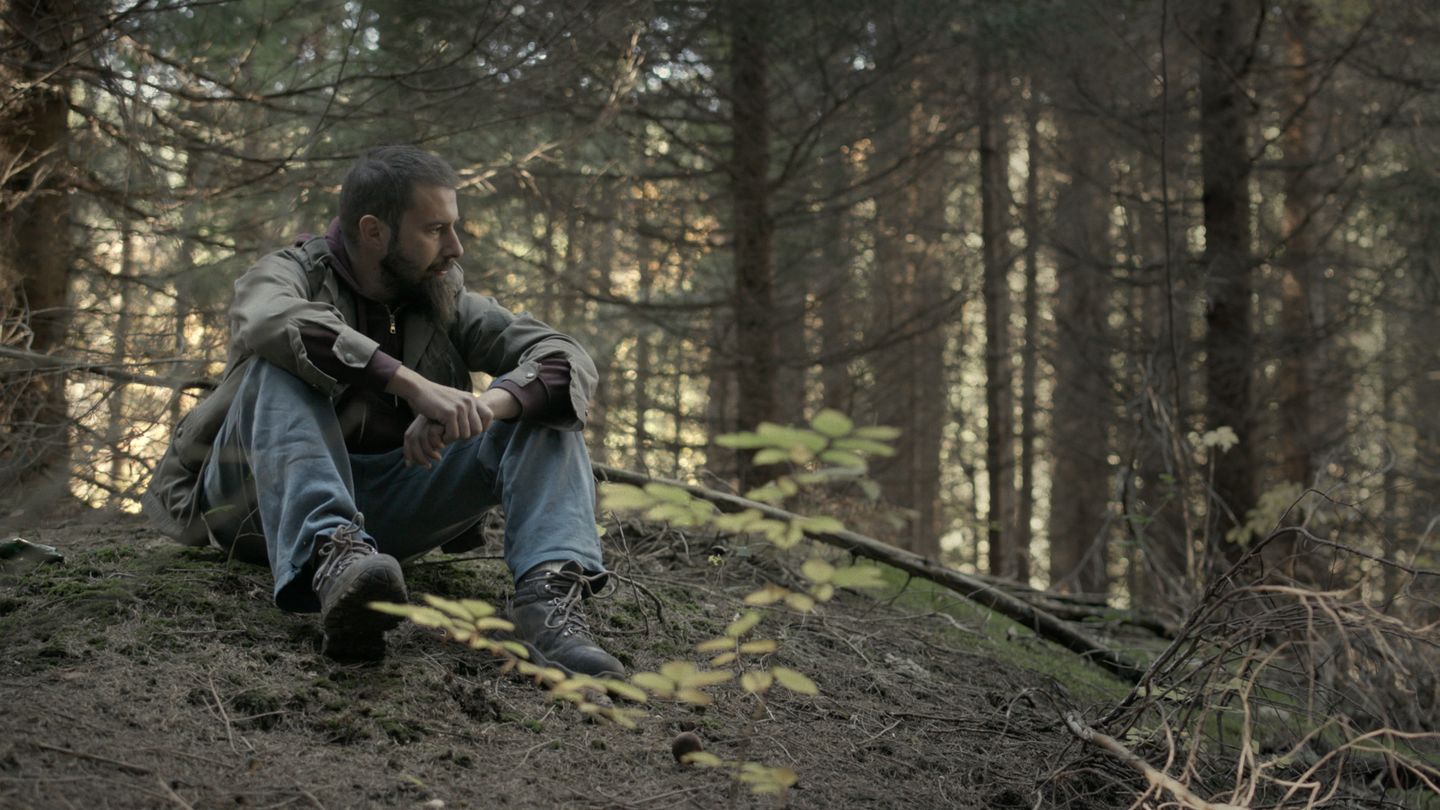
Swiss experiment targets forest drought, a driver of climate change

Climate change and droughts are transforming forests around the world and reducing their ability to absorb CO2. Which tree species are suitable for the climate of the future? A unique experiment is seeking answers in a Swiss forest.
Global warming presents trees with a vital dilemma. “They have to decide whether to risk dying of thirst or starvation,” says Markus Schaub of the Federal Research Institute for Forest, Snow and Landscape (WSL) in Birmensdorf, near Zurich.
At the root of this crucial choice is not only the lack of water in the soil due to increasingly frequent and intense droughts. There is also a phenomenon that has been little researched in connection with climate change, but which scientists believe plays a significant roleExternal link in the rapid and widespread decline of forests on all continents: the “water thirst” of the air (or atmospheric drought).
As temperatures rise, the air can hold more water as vapour. The air becomes “thirsty”, so to speak, and draws more moisture from tree leaves and soil. The trees must choose whether to keep the tiny pores on their leaves (called stomata) open to take in CO2 for photosynthesis (the plant’s process of drawing nutrients from sunlight) or close them to prevent water loss.
Forest dynamics expert Schaub, along with other researchers, are studying how trees react to this phenomenon and how it might impact the entire forest ecosystem. A unique experimentExternal link launched in late August in Pfynwald Forest, the largest pine forest in the Swiss Alps in the country’s southwestern region, aims to understand the physiological mechanisms that lead to a tree’s death.
>> Watch the video to find out what it’s all about:
The air‘s thirst increases more than temperature
The drying power of the air on a plant – in scientific parlance “vapour pressure deficit,” or VPD – increases exponentially as temperatures rise. When air temperature rises from 25°C to 35°C (a 40% increase) during a heat wave, VPD increases by 80%.
This exponential increase was only recently detected by researchers, points out Schaub. “Atmospheric drought can be just as damaging as soil drought,” he says.
VPD impacts how a tree functions. It also accelerates soil evaporation and is associated with increased risk of forest firesExternal link and decreased agricultural crop yieldsExternal link.
The air in Europe has never been drier than it is today, points out a studyExternal link published at the end of last year that analysed tree-ring data dating back to the 1600s. VPD has increased, especially in the plains of central Europe, the Alps and the Pyrenees, and has reached record levels due to greenhouse gas emissions, according to the study.
Further increases in VPD could jeopardise vital forest functions such as timber supply and carbon sequestration, according to Kerstin Treydite, WSL researcher and author of the study. A high VPD takes more water away from trees and reduces their growth, with the risk of causing their death. “This leads to uncertainties regarding climate regulation and future carbon storage by forests and agriculture,” she says.
Forests absorb less and less CO2
With global warming, some trees are losing their leaves earlierExternal link and are more vulnerable to pests such as the bark beetle. In 2019, water stress due to high temperatures and drought caused spruce and beech trees to die out in several areas of Switzerland. Human-induced climate change also increases the risk of forest fires.
“We see it very clearly: tree mortality is increasing exponentially,” says plant ecologist Charlotte Grossiord of the Swiss Federal Institute of Technology Lausanne (EPFL).
Fewer trees also mean less carbon stored in vegetation. Forests absorb about a quarter of our CO2 emissionsExternal link and are therefore considered carbon sinks. However, numerous studies show that the world’s forests, from the AmazonExternal link to forested regions in North America and EuropeExternal link, are absorbing less and less CO2. In the future, they may even emit more CO2 than they captureExternal link.
Deforestation and forest fires release CO2 accumulated over decades and centuries into the atmosphere. The emissions generated by fires between May and September 2023 in Canada are equivalent to those produced in one year by a country like Germany, according to a recent studyExternal link.

The importance of regenerating forests and preserving older forests
If forests are no longer able to sequester the amount of carbon they used to, this will accelerate climate change, according to Grossiord. The transformation of forests from carbon sinks to emission sources is a global problem that also affects Switzerland. “But that doesn’t mean there is nothing more we can do,” she says.
The scientist stresses it is essential to implement strategies that promote forest resilience to reverse this trend. For example, cutting down all the trees in the same area should be avoided, and natural forest areas should be regenerated. It is also important to preserve older forests, which store large amounts of carbon in their biomass.
Studying the impact of VPD on forests makes it possible to improve predictions of tree mortality and identify species that are more tolerant to climate change, according to the scientist. “This allows forest managers to choose species that are suitable for areas subject to increases in temperature and drought,” says Grossiord.
The diversity of tree species, the presence of dense forest cover and the creation of water retention ditches in the soil, she notes, are all factors that promote better water retention in the soil.

Which tree species are best suited to the climate of the future?
This remains an open question. The experiment conducted in the Pfynwald pine forest concerns only one type of tree, the lodgepole pine. However, the results can be extrapolated to other species, according to Nate McDowell, an earth science expert at Pacific Northwest National Laboratory, a US government research institute. “With studies like this, we can learn which species are more likely to survive the increase in VPD,” he tells SWI swissinfo.ch.
The results of the research in Switzerland will also help improve models on the evolution of carbon and water cycles, which are critical for life on Earth. The experiment continues until 2028.
Edited by Sabrina Weiss/ds

In compliance with the JTI standards
More: SWI swissinfo.ch certified by the Journalism Trust Initiative































You can find an overview of ongoing debates with our journalists here . Please join us!
If you want to start a conversation about a topic raised in this article or want to report factual errors, email us at english@swissinfo.ch.